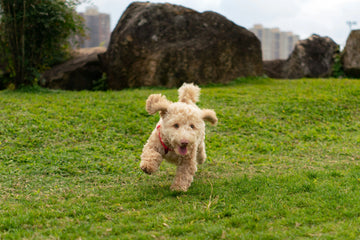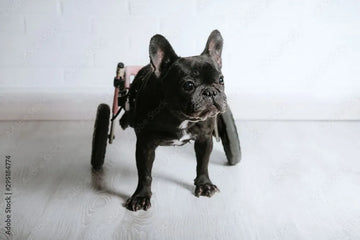Dogs are indispensable companions in our lives, and as pet owners, we have the responsibility to provide them with a comfortable and safe living environment. During a dog's growth, using dog steps can help them adapt better to life and improve their quality of life in multiple ways.
In this article, I will explore why it's important to purchase dog steps when dogs are still young and how to choose the right ones.

Why Do Dogs Need Dog Steps?
1. Protect Joint Health
Dogs, especially small breeds and older dogs, are prone to joint injuries when jumping. Dog steps can effectively reduce the impact from jumping, lowering the risk of joint injuries, particularly for breeds with inherently weak joints, such as dachshunds and bulldogs.
2. Increase Safety
When dogs jump down from heights, they may lose their balance and get injured. Using stairs for dogs allows them to safely get on and off beds or sofas, preventing accidental injuries.
3. Boost Confidence
Young dogs may feel fear and anxiety when faced with heights. Having dog steps allows them to go up and down independently, without relying on their owner, which can effectively enhance their confidence.
4. Facilitate Daily Activities
Dog steps help dogs easily get into cars, onto sofas, or beds, especially for small and older dogs, allowing them to enjoy more family activities and enhancing interaction with their owners.

Benefits of Using Dog Steps Early
1. Protect Joints
The development of joints and bones is crucial during a dog's growth. Early use of dog steps can effectively reduce the pressure on joints during jumping, thereby lowering the incidence of arthritis and other joint diseases.
2. Easier Training
Young dogs have strong learning abilities and are more receptive to new things. When using stairs for dogs, I can use positive reinforcement to reward and encourage them, helping them adapt and master the use of the steps more quickly. This training not only aids their physical coordination but also strengthens our bond.
3. Improve Quality of Life
Starting to use dog steps for high beds while they are young allows dogs to participate more easily in family activities, enjoying time with their owners. This sense of involvement can enhance their happiness and reduce anxiety and loneliness.
4. Prevent Future Problems
Many dogs may face joint and spine issues as they age. Using dog steps when they are young helps them develop good habits for going up and down, reducing the risk of injury in their later years.

How to Choose the Right Dog Steps?
When selecting suitable dog steps, there are several key factors to consider:
1. Non-Slip Design
Ensure the dog steps have a non-slip surface so that dogs can use them safely, reducing the risk of slipping. Non-slip materials provide better traction, allowing dogs to feel more secure when going up and down.
2. Comfortable Padding
Choose dog steps with high-density foam padding, as this can provide good cushioning and reduce the impact on dogs while using them. A comfortable staircase will make dogs feel more at ease when going up and down, avoiding discomfort from hard surfaces.
3. Height and Width
The height and width of the dog steps should be chosen based on the dog's size. For small dogs, the height of each step should be appropriate, and the width should be sufficient for them to walk comfortably. Generally, each step should be about 10-12 inches high.
4. Material and Durability
Pay attention to the quality of the materials when choosing **dog steps**. They should be made of sturdy and durable materials to ensure they can withstand the dog's weight and daily wear and tear.

Investing in dog steps is a proactive measure that benefits both dogs and their owners. By ensuring our furry friends have safe access to high places, we can enhance their quality of life and prevent future health issues.
Remember, the earlier you introduce dog steps , the better it is for your dog's long-term well-being.





